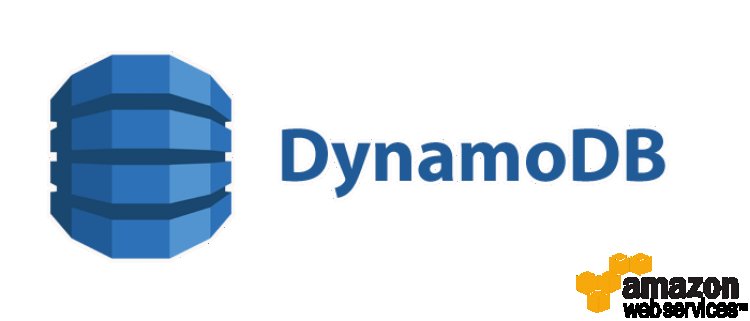DynamoDB - data pipeline
Unlock the potential of DynamoDB - data pipeline with our comprehensive guide. Learn the ins and outs, best practices, and expert insights for seamless data management and optimization.

DynamoDB - Data Pipeline: Orchestrating Digital Transformation
DynamoDB - data pipeline isn't just a tool; it's a conductor orchestrating the symphony of digital transformation. In this section, we'll delve into key aspects that make DynamoDB - data pipeline a cornerstone in the realm of data management.
Understanding Data Pipelines
Data pipelines are the backbone of efficient data management, ensuring seamless flow from source to destination. DynamoDB's role in this ecosystem goes beyond storage; it orchestrates the movement, transformation, and optimization of data, making it a pivotal player in modern digital landscapes.
DynamoDB's Role in Data Management
As an integral part of the AWS ecosystem, DynamoDB takes data management to new heights. Its scalable, fully-managed nature simplifies the complexities associated with handling vast amounts of data, making it a preferred choice for businesses aiming for efficiency and flexibility.
Using the Data Pipeline
You must specify the action and resource permissions when using the data pipeline. You can use an IAM role or policy to define them. Users who perform import/export should note that they will need an active access key ID and a secret key.
IAM Roles for Data Pipeline
Two IAM roles are required to use the data pipeline −
-
DataPipelineDefaultRole - contains all the actions that you allow the pipeline to perform for you.
-
DataPipelineDefaultResourceRole - This is where you allow resources to be given to the pipeline.
DataPipelineDefaultRole - contains all the actions that you allow the pipeline to perform for you.
DataPipelineDefaultResourceRole - This is where you allow resources to be given to the pipeline.
If you are new to Data Pipeline, you should spawn each role. All previous users have these roles because of the existing roles.
Use the IAM console to create IAM roles for the data pipeline and complete the following four steps:
Step 1: Log in to the IAM console located at https://console.aws.amazon.com/iam/.
Step 2 − Select Roles from the toolbar.
Step 3 − Select Create New Role . Then enter DataPipelineDefaultRole in the Role Name field and select Next Step . In the AWS Service Roles list in the Role Type panel , navigate to the data pipeline and select Select . Select Create Role from the Browse panel .
Step 4 − Select Create New Role .
Significance in Modern Digital Ecosystems
In a world driven by data, DynamoDB - data pipeline is a catalyst for innovation. It facilitates the integration of data-driven insights into decision-making processes, enabling organizations to adapt, evolve, and thrive in the ever-changing digital landscape.
This is just the beginning of our journey into the world of DynamoDB - data pipeline. The subsequent sections will delve deeper, providing actionable insights and expert advice to empower you in harnessing the full potential of this transformative technology.
FAQs
Q: How does DynamoDB - Data Pipeline differ from traditional ETL tools? DynamoDB - Data Pipeline offers a serverless, fully-managed solution, eliminating the need for infrastructure management. Unlike traditional ETL tools, it seamlessly scales with your data needs, providing cost-effective and efficient data processing.
Q: Can DynamoDB - Data Pipeline handle real-time data processing efficiently? Absolutely. DynamoDB - Data Pipeline excels in real-time data processing through its integration with DynamoDB Streams and AWS Lambda. This combination allows for near-instantaneous updates and responses to changes in the data source.
Q: What are the key considerations for selecting DynamoDB as a data storage solution? When selecting DynamoDB, consider factors such as scalability, performance, and seamless integration with other AWS services. DynamoDB's ability to handle massive workloads, coupled with its flexible data model, makes it a versatile and powerful choice for data storage.
Q: How can I optimize DynamoDB queries for better performance? Optimizing DynamoDB queries involves carefully designing your data model, utilizing secondary indexes, and efficiently using query and scan operations. It's crucial to understand the access patterns of your application and design the table schema accordingly for optimal performance.
Q: What are the potential challenges faced when implementing DynamoDB - Data Pipeline? Challenges may include managing data consistency in distributed systems, handling large-scale data ingestion, and adapting to evolving data schema. However, DynamoDB provides tools and best practices to address these challenges and ensure a smooth implementation process.
Q: How can DynamoDB - Data Pipeline contribute to predictive analytics? DynamoDB - Data Pipeline plays a vital role in predictive analytics by providing real-time data processing capabilities. This enables organizations to analyze data as it's generated, making timely predictions and informed decisions based on the most up-to-date information.
Conclusion: Embracing the DynamoDB - Data Pipeline Revolution
In conclusion, DynamoDB - data pipeline isn't just a technology; it's a revolution in data management. Armed with the insights gained from this comprehensive guide, you're poised to embark on a journey that goes beyond managing data — it's about orchestrating digital transformation. Join the DynamoDB - Data Pipeline community, apply these strategies, and witness the positive impact on your data-driven endeavors.

 user-pcr
user-pcr 













